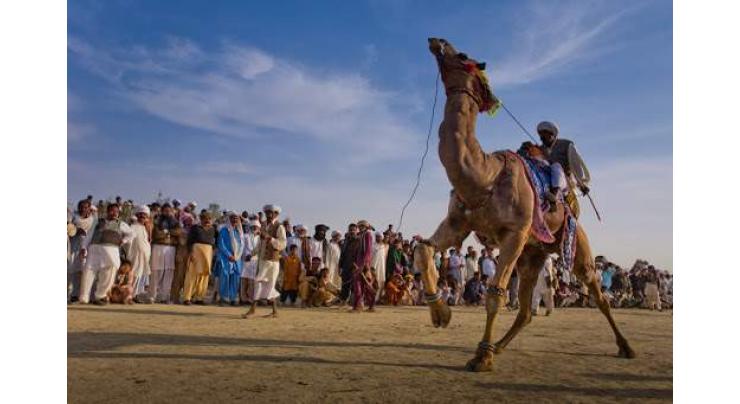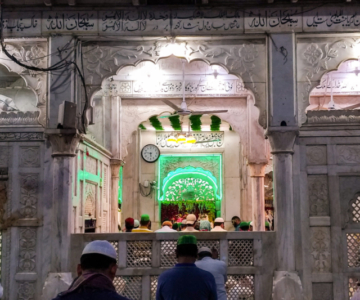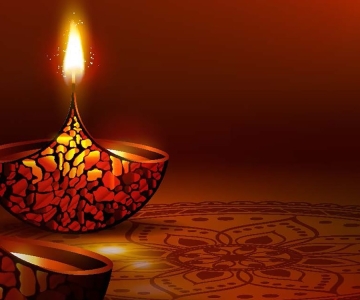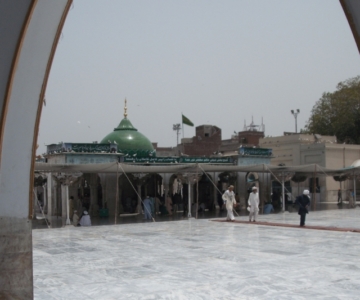Earlier I posted on Khowaja Ghulam Fareed, the Sufi poet from Cholistan. A famous festival takes place each year attracting thousands of people in the vast desert that Cholistan is. About this mela or gathering I found this charming piece by Zia Zaidi.

It appeared that a powerful magnet was attracting the pilgrims — beating their drums and dancing in a trance…
I was witnessing an authentic cultural festivity at Channan Peer, as it unfolded the glorious history of Cholistan, of the many saints buried here. Their ultimate spirit was transformed into the magical festivity of the native people. As I landed into Yazman from my headquarter in Bahawalpur, I felt as if I was travelling to the other side of the world.
The surreal landscape and a vibrant mysticism was wrapped into the romanticism of the mela called Channan Peer. The glowing faces of the caravan of people, some dozens riding camel carts decorated, tattooed, with minute details, others packed in tractor trolleys were all keen to be absorbed into the mela. I too was in a dreamy state of mind. It seemed as if there was a powerful magnet attracting the pilgrims beating their drums and dancing in trance inside the well-like settlement they call a shrine in desert, where Channan Peer vanished.
I was elated as I saw each pilgrim focused to the festivity of the event. There were so many stories about Channan Peer that I was totally confused. According to one myth, Channan Peer, a son of a Hindu Raja of Jaisal Meer, was Muslim by birth. When Jalaludin Surkh Bukhari came to this land and asked people if there is any Muslim, people replied in negative. Jalaludin professed the birth of Channan Peer and said: “This child will be from a Hindu Raja and will be a born Muslim by the will of God…” and so it happened. According to the myth, the child was reciting kalima when he was born. The Hindu Raja was upset. He tried to kill his new born son. The Mother Rani of the newly born requested to spare his life and leave him in desert. The Raja agreed and they put Channan Peer baby into a wooden colt and left him alone in desert.
After some three four days some passerby travelling Hindu pilgrims witnessed the beautiful baby, being fed by a mother deer. They told the Hindu Raja who was again forced to kill his son, but failed to kill him. The Rani came in the desert to feed his son and this period continued for two three years. Finally the Raja again tried to kill this child but the baby vanished into the sand forever.
Hundreds of thousands of people converted to Islam and the hegemony of the Raja expired. That’s why still people who don’t have children come here to make wishes. I witnessed beautiful goats, sheep and oxen been decorated and given as nazarana from the pilgrims to Channan Peer as their wishes came true. Interestingly there was no segregation between Hindus or Muslims in this festival. Also there were small stalls of hand-made nomadic jewellery and sweets, Jalebees, pakoras etc. as a hot selling item around the mela on very cheap rates. I came here as a travelling artist to paint but ended up falling in love with Cholistan’s dancing girls (Sambara) and natural Rohi people.



